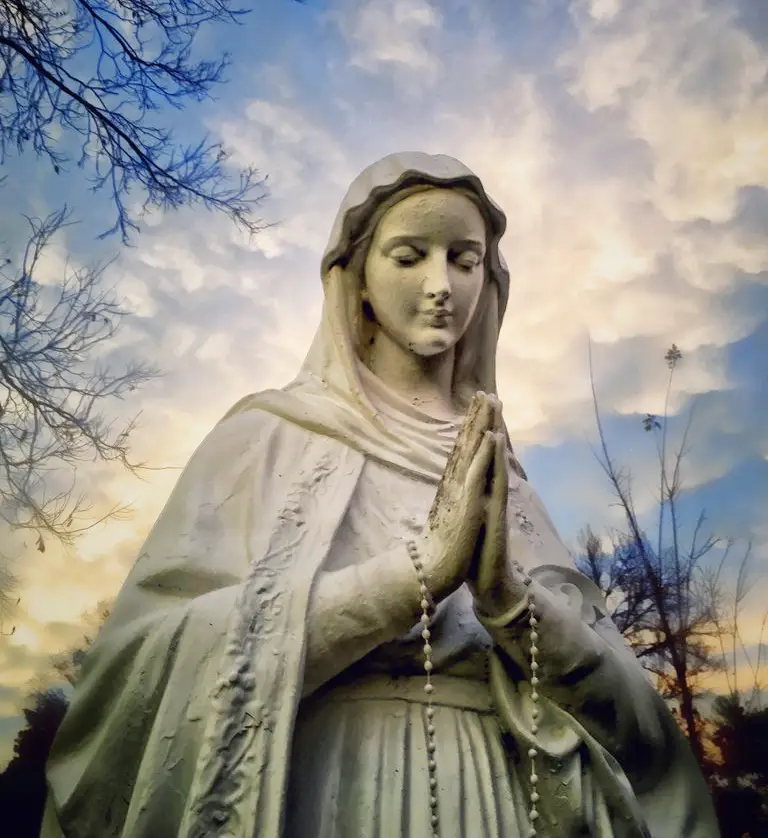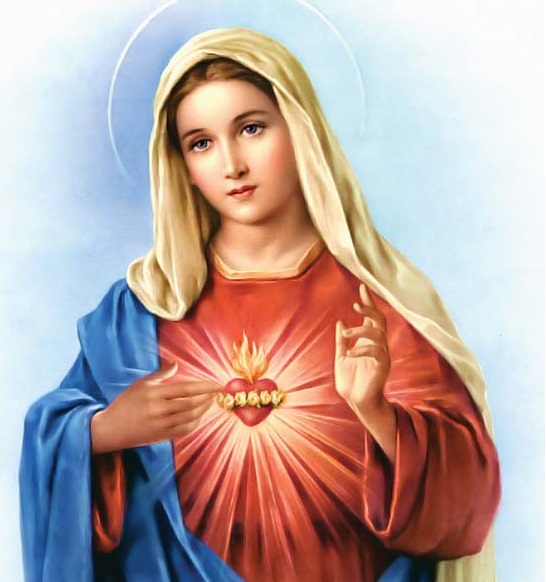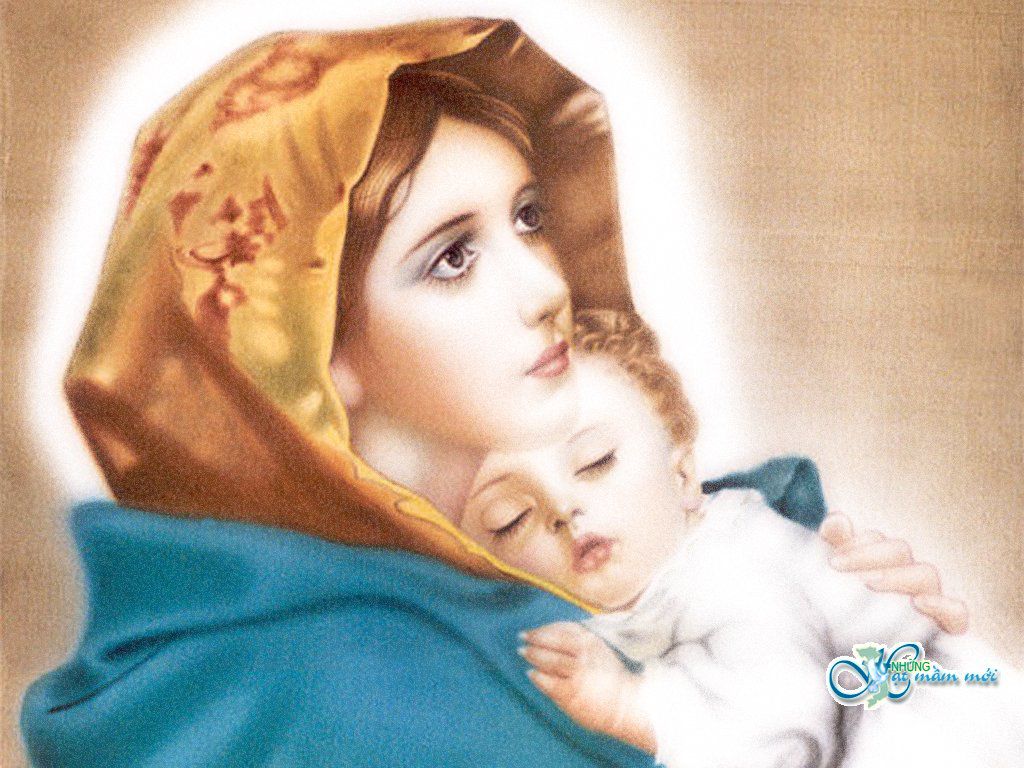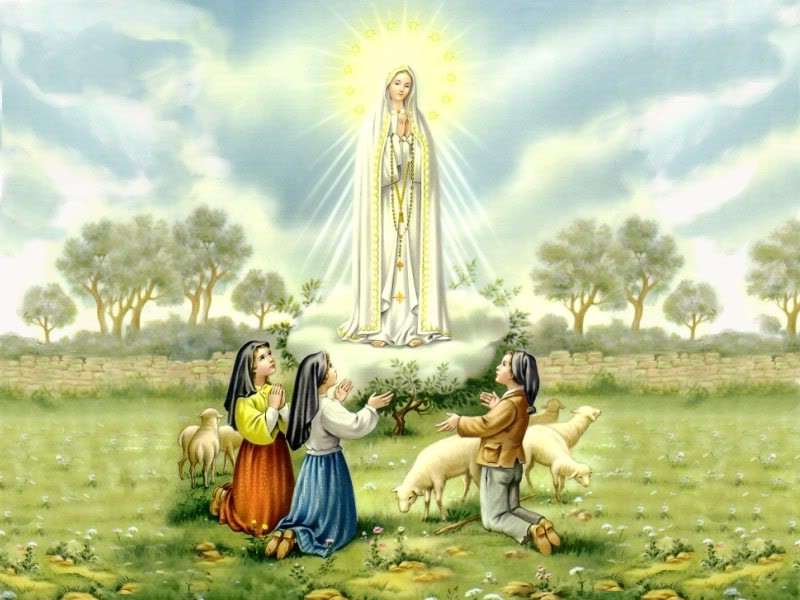The Virgin Mary, revered as the mother of Jesus Christ, stands as one of the most profound and cherished figures in Christian theology. Esteemed not only for her role in the divine narrative of Christianity but also for her exemplification of grace and obedience, Mary’s influence transcends religious boundaries, touching the hearts of believers worldwide.
Who is the Virgin Mary?
The Virgin Mary, also known as Mary, Mother of Jesus, holds a central position in Christian theology and devotion as the mother of Jesus Christ, whom Christians believe to be the Son of God. According to the New Testament of the Bible, Mary was a young woman living in Nazareth who conceived Jesus through the Holy Spirit while she was still a virgin, an event known as the Immaculate Conception.
Mary’s role extends beyond the mother of Jesus. In Christian doctrine, she is venerated as an exemplar of piety, chastity, and obedience. Theologically, she is acknowledged in several key Christian creeds and plays a pivotal role in incidents throughout Jesus’ life, including his birth, his presentation at the temple, his crucifixion, and his resurrection appearances.
In the Roman Catholic Church, Mary has received the most significant veneration, evidenced by doctrines such as her Immaculate Conception, which states that she was conceived without original sin, and her Assumption into heaven. These beliefs underscore her purity and special place in heaven, aligning with her status as “Queen of Heaven.” The Eastern Orthodox Church similarly venerates Mary, referring to her as Theotokos, meaning “God-bearer,” underscoring her role in bearing the divine Jesus.
Throughout Christian history, Mary has been the subject of extensive theological work and is a central figure in Marian devotions, which include prayers, feasts, and the Rosary—a series of prayers that includes contemplation of events in Mary’s life alongside those of Jesus. Her impact transcends religious boundaries, influencing art, culture, and music, making her one of the most depicted and esteemed figures in human history.
Mary also appears in the Quran, where she is recognized as the mother of Prophet Isa (Jesus) and is highly revered in Islam for her purity and role as a devoted servant of God. This universal respect across major religions highlights her significant role as a symbol of devotion and virtue.
Some key events in the life of the Virgin Mary
The life of the Virgin Mary, as recorded in Christian tradition and sacred texts, encompasses several key events that are central to her role in Christianity. These events not only highlight her significance in the narrative of Jesus Christ but also underline her revered status across Christian denominations.
- The Immaculate Conception – This doctrine holds that Mary herself was conceived without original sin. This event is celebrated on December 8th and underscores her unique purity, which, according to Catholic doctrine, made her a fitting vessel for the incarnation of Christ.
- The Annunciation – Perhaps one of the most pivotal moments in Mary’s life, this event marks the visit of the Angel Gabriel to Mary, during which she was informed of her role as the mother of the Messiah. Gabriel’s greeting, “Hail, full of grace, the Lord is with thee,” and Mary’s affirmative response, “Behold the handmaid of the Lord; be it unto me according to thy word” (Luke 1:28, 38), signify her willing acceptance of God’s plan.
- The Visitation – Following the Annunciation, Mary visited her cousin Elizabeth, who was also miraculously pregnant with John the Baptist. Elizabeth’s greeting, “Blessed art thou among women, and blessed is the fruit of thy womb” (Luke 1:42), further reinforces Mary’s blessed state. This event highlights the recognition of Jesus’ divine nature even before his birth.
- The Nativity – The birth of Jesus in Bethlehem is a cornerstone of Christian faith, celebrated globally as Christmas. Mary’s role as the mother of Jesus is central in the nativity narratives, which depict her and Joseph arriving in Bethlehem and Jesus being born in a manger because there was no room at the inn.
- The Presentation in the Temple – Mary and Joseph presented Jesus in the Temple in Jerusalem, fulfilling Jewish law. Simeon’s prophecy during this event foretold Mary’s own suffering, symbolically linking her to Jesus’ future sacrifice.
- The Wedding at Cana – This event, recorded in the Gospel of John, marks Jesus’ first public miracle, turning water into wine at a wedding feast. Mary’s role is crucial as she prompts Jesus’ action, indicating her intercessory role and her awareness of his divine capabilities.
- The Crucifixion – Mary was present at the crucifixion of Jesus, standing by the cross as he died. This moment of profound sorrow highlights her deep participation in the pain and suffering of her son, reflecting her role as a co-sufferer.
- The Assumption – According to Roman Catholic and Orthodox belief, at the end of her earthly life, Mary was assumed body and soul into heaven. This event, celebrated on August 15th, signifies her exalted status and eternal union with her divine son.
Each of these events forms a critical component of the liturgical calendar and Marian devotion, reflecting her integral role in the Christian narrative and her ongoing influence as a figure of veneration and emulation.
Why is Mary considered blessed?
Mary is considered blessed in Christian theology primarily for her role as the mother of Jesus Christ, who is revered as the Son of God. This distinction bestowed upon her is rooted in several key biblical passages and theological interpretations.
The primary scriptural basis for considering Mary blessed comes from the Gospel of Luke, where during the Annunciation, the angel Gabriel greets her with the words, “Hail, full of grace, the Lord is with thee: blessed art thou among women” (Luke 1:28). This greeting underscores her unique grace and favor with God. Later, her cousin Elizabeth, filled with the Holy Spirit during Mary’s visitation, exclaims, “Blessed art thou among women, and blessed is the fruit of thy womb” (Luke 1:42). These biblical affirmations are central to Christian understanding of Mary’s blessedness.
Moreover, Mary’s response to her divine calling, known as the Magnificat (Luke 1:46-55), reflects her awareness and acceptance of her blessed state. In it, she proclaims, “For behold, from henceforth all generations shall call me blessed.” This prophetic statement acknowledges her perpetual recognition as blessed in the history of Christianity.
Theologically, Mary’s blessedness is also tied to her role in the salvific mission of Jesus. As the mother of the Savior, she participated uniquely in God’s plan for humanity’s redemption. Her fiat—her willing acceptance of God’s will at the Annunciation—is seen as her commitment to this sacred role, marking her as a model of faith and obedience for Christians.
Additionally, doctrines like the Immaculate Conception and the Assumption contribute to the understanding of Mary as blessed. The Immaculate Conception, which holds that Mary was conceived without original sin, reflects her special sanctification by God from the moment of her existence, preparing her to be the Mother of Jesus. The Assumption, which teaches that she was taken body and soul into heavenly glory, signifies her exalted status and eternal blessedness.
What does it mean that Mary was a virgin?
The belief that Mary was a virgin refers primarily to the Christian doctrine of the Virgin Birth, which holds that Mary conceived Jesus by the power of the Holy Spirit without the involvement of a human father. This concept is a cornerstone of orthodox Christian theology, underscoring both the miraculous nature of Jesus’ birth and the divine intervention in the human realm.
The doctrine of the Virgin Birth is articulated in the Gospels of Matthew and Luke in the New Testament. Matthew 1:23 cites a prophecy from Isaiah, interpreting it as foretelling the virgin birth: “Behold, a virgin shall be with child, and shall bring forth a son, and they shall call his name Emmanuel.” Luke’s account provides a detailed narrative where the angel Gabriel tells Mary, “The Holy Spirit will come upon you, and the power of the Most High will overshadow you; therefore the child to be born will be called holy—the Son of God” (Luke 1:35).
In theological terms, the Virgin Birth is significant because it marks Jesus as being born without original sin. Unlike traditional human conception, which according to Christian doctrine transmits the original sin from Adam, Jesus’ conception by the Holy Spirit ensured his purity and holiness from the moment of conception, which was essential for his role as the sinless Savior.
Moreover, Mary’s virginity is also seen as a sign of her total devotion and obedience to God’s will. Her response to Gabriel, “Behold, I am the servant of the Lord; let it be to me according to your word” (Luke 1:38), exemplifies her acceptance of a unique, divinely ordained role despite the personal and social challenges it could bring. Her perpetual virginity, a belief held by many Christian traditions, further emphasizes her special sanctity and the singular nature of her vocation.
Thus, Mary’s virginity is not merely a physical attribute but a symbol of her pure faith and profound role in the divine plan of salvation. It serves as a testament to the miraculous, intervening directly into human history through the birth of Jesus Christ, and underscores the sacredness of her life and mission.
What are Marian apparitions, and what do they signify?
Marian apparitions refer to reported supernatural appearances of the Virgin Mary. These events have been recorded throughout Christian history and across various cultures. They often involve Mary appearing to individuals or groups, conveying messages, and frequently calling for prayer, penance, and conversion. The Catholic Church has a formal process for investigating and, in some cases, officially recognizing these apparitions as worthy of belief, though belief in them is not required as a matter of Catholic faith.
Key elements of Marian apparitions typically include a vision of Mary, sometimes accompanied by other sensory experiences, such as light or fragrance, and a message or series of messages. These messages often emphasize themes central to Christian doctrine, such as the importance of faith, the need for prayer (particularly the Rosary), calls for conversion and repentance, and warnings about the consequences of sin.
Some of the most well-known and influential Marian apparitions include:
- Our Lady of Guadalupe (1531) – Appearing to Saint Juan Diego near Mexico City, Mary left an image of herself imprinted on his cloak. This apparition has had a profound impact on Christian devotion and culture in Mexico and throughout the Americas.
- Our Lady of Lourdes (1858) – In Lourdes, France, Mary appeared to Bernadette Soubirous, a young peasant girl. Mary’s messages at Lourdes led to the town becoming a major center of pilgrimage and reports of healing miracles.
- Our Lady of Fatima (1917) – Appearing to three shepherd children in Fatima, Portugal, Mary imparted a series of prophecies and requests, including the consecration of Russia to her Immaculate Heart and the promotion of the First Saturday Devotions.
The significance of Marian apparitions extends beyond the religious messages conveyed. They often occur at times of personal, social, or spiritual crisis, suggesting Mary’s role as a mediator and comforter. The sites of these apparitions frequently become pilgrimage destinations, drawing millions of believers seeking spiritual solace, physical healing, or a deeper connection with their faith.
For the Catholic Church and many believers, Marian apparitions underscore Mary’s ongoing spiritual presence and her role as an intercessor between humanity and God. They are seen as a sign of her maternal care and concern for the world, reinforcing her role in the broader Christian narrative of salvation and redemption.
Do all Christian denominations share the same beliefs about Mary?
Not all Christian denominations share the same beliefs about the Virgin Mary, reflecting a range of theological interpretations and traditions within Christianity.
- Roman Catholic Church: The Catholic Church holds the most developed and detailed views on Mary. Key doctrines include the Immaculate Conception (the belief that Mary was conceived without original sin), the perpetual virginity of Mary (the belief that Mary remained a virgin before, during, and after the birth of Jesus), and the Assumption (the belief that Mary was assumed body and soul into heaven). The Catholic Church also emphasizes Marian devotion, including praying the Rosary and celebrating numerous Marian feasts.
- Eastern Orthodox Church: The Orthodox Church shares many beliefs with the Catholic Church regarding Mary, such as her perpetual virginity and her role as Theotokos (God-bearer), a title that emphasizes her role in bearing Jesus Christ. However, the Orthodox do not formally define the Immaculate Conception in the same way as Catholics. They celebrate the Dormition of the Theotokos, which similarly acknowledges Mary’s bodily assumption into heaven, but with some theological nuances differing from the Catholic Assumption.
- Protestant Churches: Beliefs about Mary vary significantly among Protestant denominations. Mainstream Protestant churches, such as Lutherans and Anglicans, generally accept Mary as the mother of Jesus and honor her as a model of faith and obedience. However, they do not accept the Catholic doctrines of the Immaculate Conception, Assumption, or her perpetual virginity. Marian devotions and the veneration of Mary are also typically absent or much less emphasized.
- Reformed and Evangelical Churches: In more reformed traditions, including many evangelical and Baptist churches, Mary is respected as the mother of Jesus but is not the focus of significant theological attention or devotion. These groups reject the veneration of Mary and any doctrine that they see as not explicitly supported by Scripture, such as her Immaculate Conception and Assumption.
- Non-Trinitarian Churches: Groups like the Church of Jesus Christ of Latter-day Saints (Mormons) and Jehovah’s Witnesses hold views of Mary that differ significantly from mainstream Christian doctrine. Mormons respect her as the mother of Jesus but do not venerate her, and their theological framework does not support traditional Christian doctrines concerning Mary. Jehovah’s Witnesses also recognize Mary as Jesus’ mother but place no theological emphasis on her beyond her biblical role.
The diversity in Marian beliefs underscores the theological breadth across Christian denominations and reflects deeper doctrinal differences regarding Scripture, tradition, and the nature of Jesus Christ.











